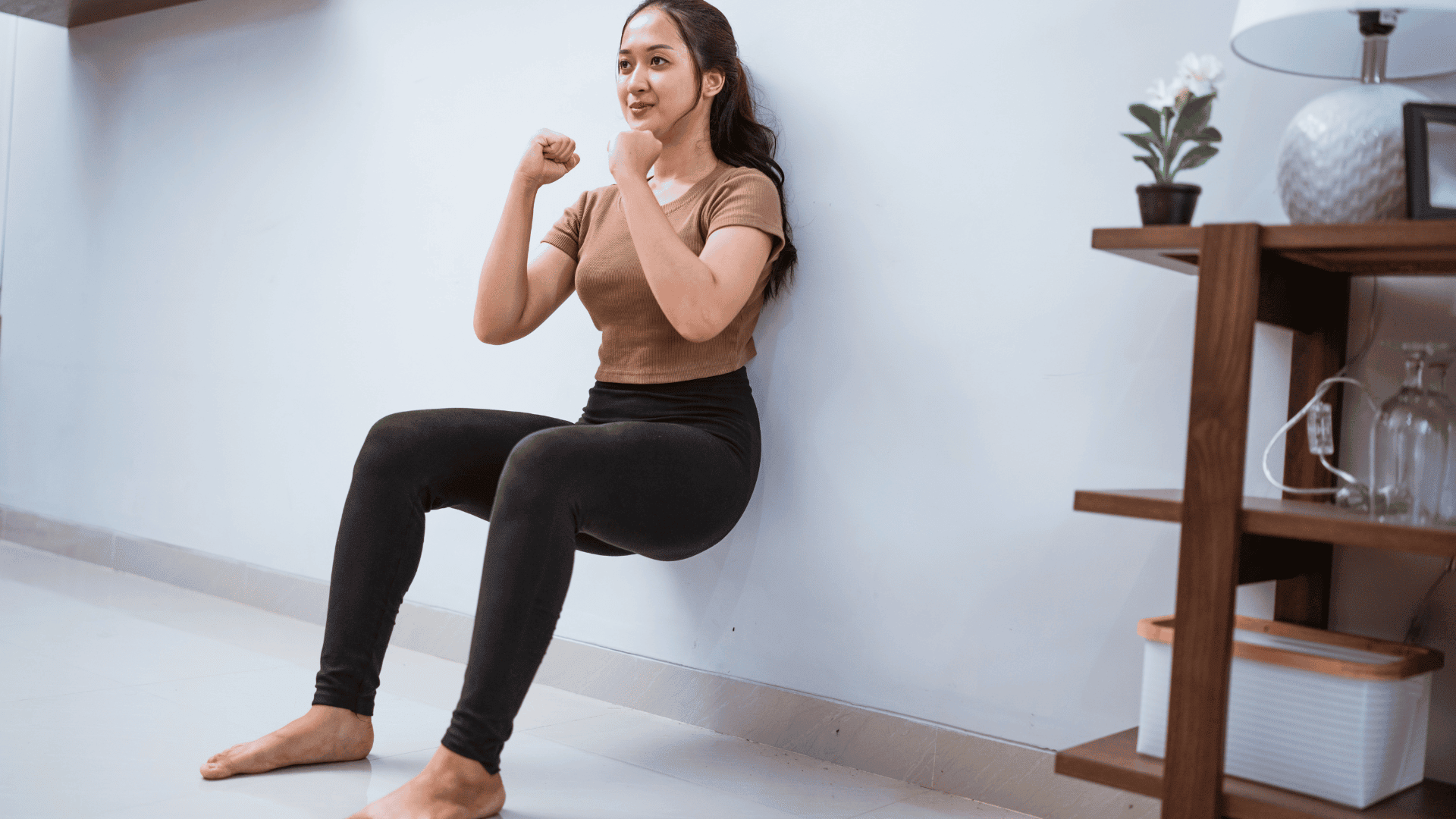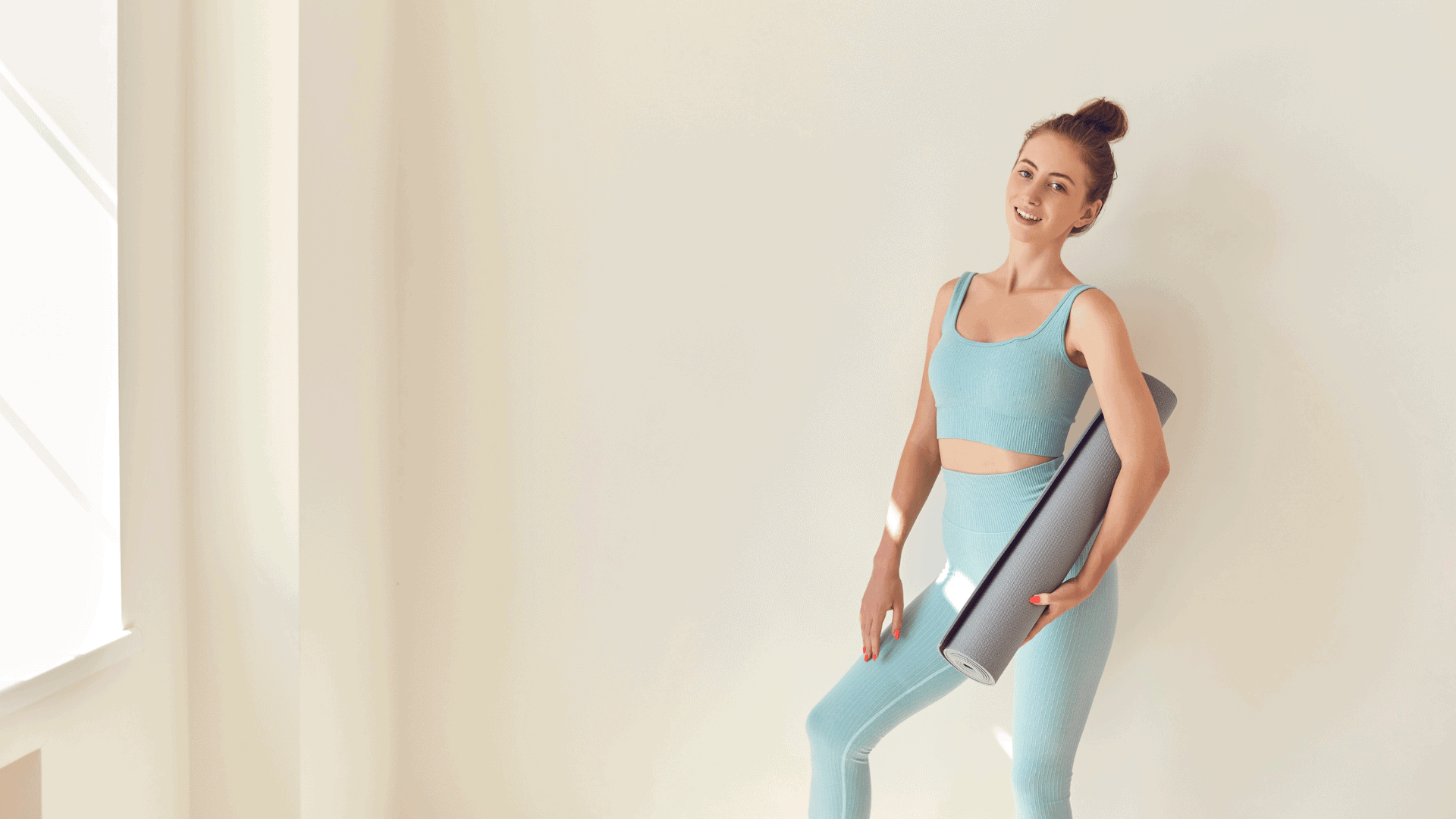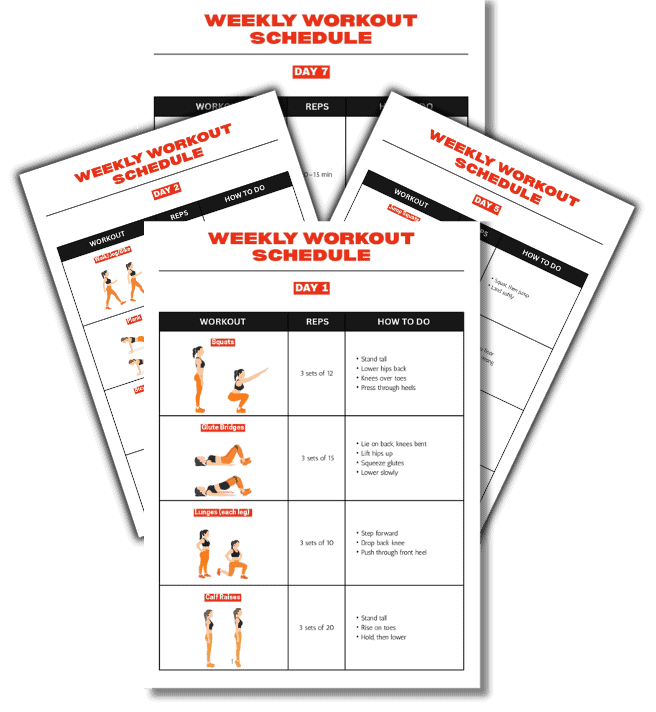Ever thought about using a wall for your Pilates workout? Sounds interesting, right?
Well, wall Pilates is a fresh (and also fun) way to add support and challenge to your moves, all from the comfort of your own home.
Whether you’re new to exercise or just tight on space, wall Pilates works for everyone.
It helps you build strength, stretch out tight muscles, and improve your balance, even if you’ve never tried Pilates before.
Plus, it’s gentle on your joints, which is a total win if you want a workout that feels good as you go.
In this guide, I’ll share a simple, free wall Pilates workout plan that’s easy to follow. You’ll get tips to keep you motivated and feeling strong, no fancy gym or equipment needed.
So, what exactly is Wall Pilates?

Wall Pilates is basically Pilates exercises done with the help… (guess what?) of a WALL.
Instead of just lying or sitting on a mat, you use the wall to support your body as you move. This makes the workout easier to follow and helps you stay balanced.
And if you’re thinking if it’s the same as regular Pilates… you’re wrong.
Because here, the wall acts like your workout buddy. It keeps you steady and helps you hold the right posture. That means you get the most out of each move without wobbling or losing form.
But, why should you try it?
Wall Pilates builds strength in your core, legs, and arms. It also improves your posture by teaching your body how to stand and move right.
Plus, it’s gentle on your joints, making it great if you’re new to exercise or need a low-impact option.
The wall isn’t just there to lean on, it helps you move with control, so every rep counts.
Setting Up Your Wall Pilates Space at Home

Before you start, pick the right spot for your wall Pilates session. Find a wall that’s clear of furniture and clutter, with enough space for you to move comfortably.
The floor should be flat and not slippery. (safety first) Also, make sure the wall surface is smooth and clean, so you don’t get any unexpected scratches or marks.
You really just need three basics to get going… A sturdy wall, a comfy mat to protect your joints, and clothes that let you move freely. Think stretchy leggings and a soft top, nothing too tight or loose.
If you want to mix things up, grab a few optional props like resistance bands or a small Pilates ball. These can add a little extra challenge or help with balance.
But don’t worry if you don’t have them; your wall and mat are all you need to get a great workout.
Step-by-Step Free Wall Pilates Workout Plan
Before you jump into the workout, start with a quick warm-up. A few moves that you can try are some shoulder rolls and neck stretches while standing by the wall.
This will help wake up your muscles and get your blood flowing.
Now, let’s get into the key exercises. Here’s a simple plan you can follow:
- Wall Roll Down: Stand with your back against the wall. Slowly roll down one vertebra at a time, reaching toward your toes. Then roll back up. This stretches your spine and warms up your back.
- Wall Squats: With your back flat against the wall, slide down into a squat position. Hold for a few seconds, then push back up. This works your legs and glutes without stressing your knees.
- Leg Lifts: Stand next to the wall for balance. Lift one leg out to the side slowly, then lower it back down. Repeat on the other side. This tones your hips and thighs.
- Arm Circles on the Wall: Place your hands on the wall at shoulder height and make small circles with your arms. This warms up your shoulders and arms.
For beginners, try doing 8 to 10 reps of each move. Aim for 2 to 3 sets. Take breaks if you need them. (No need to rush)
Then, finish your workout with some cool-down stretches. You can stand tall and reach your arms overhead, then slowly bend forward to touch your toes.
Stretch your calves by leaning into the wall with one foot back. These stretches help your muscles relax and reduce soreness.
How to Modify Moves for Your Level
Not every move fits every body, especially when you’re just starting out or dealing with injuries. But the good thing is, wall pilates is easy to adjust, so you can work at your own pace.
If you’re a beginner or have joint pain, try doing fewer reps or holding positions for less time.
For example, instead of a full wall squat, slide down just a little bit until it feels comfortable. Use the wall more for support and take breaks whenever you need.
Slow movements (done gently) count just as much as faster ones.
And as you get stronger, you can make the exercises harder. You can try adding more reps or holding positions longer.
For leg lifts, add small pulses at the top. You can also add light weights or resistance bands to challenge your muscles more.
Just remember, the wall is there to help keep your form tight.
Most importantly, listen to your body. If something hurts or feels sharp, stop and rest. Pilates should never cause pain. Adjust the move or skip it for the day.
Taking care of yourself means you’ll stick with it longer and get better results.
Keep Your Wall Pilates Routine Fun and Easy to Stick With
Staying motivated can be tricky, but a few simple tricks can make your wall Pilates sessions something you look forward to.
First, turn on some music that pumps you up or helps you relax, whatever matches your mood. Using a timer or a workout app can keep your moves on track and make the workout feel like a game, not a chore.
Set small goals that you can actually reach, like holding a wall squat a few seconds longer or doing one more rep than last time.
Celebrate these little wins; they add up fast and keep you feeling good.
Also, mix wall Pilates with other workouts like walking, yoga, or light strength training. Giving your body variety helps prevent boredom and keeps your whole routine balanced.
And don’t forget rest days, they’re just as important as workout days!
Your New Favorite Workout Is Just a Wall Away
Wall Pilates is one of the easiest and smartest ways to get stronger, improve your posture, and stretch out tight muscles, all without needing fancy gear or a gym membership.
It’s gentle on your body, works for all fitness levels, and fits perfectly into your busy life at home.
Starting small is totally okay. And even just a few minutes a day can build up to big changes over time.
The best part?
You get to move at your own pace and make the workout your own. (without the pressure or stress)
Remember, every time you roll out your mat, you’re doing something amazing for your body and mind. Keep that positive energy going!
And don’t be shy, share your wins, your questions, or even the parts you find tricky. Your journey might be exactly what someone else needs to hear.
So go ahead, take that first step. Your new favorite workout is waiting, right there on your wall.
Keep Your Progress Moving Forward

Trying Wall Pilates once or twice feels good, but lasting change comes when you follow a plan you can stick with.
The Free Weekly Workout Schedule makes that easy by showing you exactly where Wall Pilates (and other routines) fit in your week.
It’s flexible, beginner-friendly, and designed to help you stay consistent without stress.
Frequently Asked Questions (FAQ)
1. Is wall Pilates good for beginners?
Yes! Wall Pilates is perfect for beginners because the wall helps support your body and keep your form right. It makes moves easier to learn and safer to do.
2. Do I need special equipment besides a wall?
Not really. All you need is a sturdy wall and a soft mat or towel to protect your joints. Optional props like resistance bands or small balls can add variety but aren’t necessary.
3. How often should I do wall Pilates?
Aim for about 3 to 5 times a week for the best results. This helps your muscles get stronger without overworking them. Listen to your body and take rest days when needed.
4. Can wall Pilates help with posture and back pain?
Definitely. Wall Pilates teaches you how to stand and move with better alignment. It strengthens your core and back muscles, which can ease posture problems and reduce back pain.
5. Can I do wall Pilates if I have an injury?
In many cases, yes. Wall Pilates is low impact and gentle. However, it’s important to check with your doctor or physical therapist before starting, and modify moves as needed.
6. How long does a typical wall Pilates workout last?
Most wall Pilates workouts take between 20 and 40 minutes. You can also do shorter sessions if you’re tight on time—every little bit helps!










